It’s impossible to do an article about Uranus without opening up the back door to a spit storm of potty humour. I get it, there’s something just hilarious about talking about your, mine and everyone’s anus. And even if you use the more sanitized and sterile term urine-us, it’s still pretty dirty, in an unwashed New York stairwell kind of way. You’re in us? No.
This is a no-win solution. It’s a Kobayashi Maru scenario here. We’re all doomed.
Can we call a truce? I dare you commentators, to keep the YouTube comments as pure and clean as driven snow, so we can focus on the super interesting science. Think of the children.
Let’s set the stage, I’m going to let planetary astronomer Kevin Grazier give you the proper pronunciation to clear our minds and let us move forward with grace and civility.
Kevin Grazier:
Strictly speaking, it’s pronounced Youranous, is the pronunciation.
As you probably know, Uranus… I mean Ouranus. No, I can’t do it, my brainwashing is too far along. Save yourselves!. Anyway, Uranus is the 7th planet from the Sun, and the 3rd largest planet in the Solar System. Jupiter and Saturn get all the spacecraft and Hubble space telescopes, but Uranus is an incredibly worthwhile target to visit.
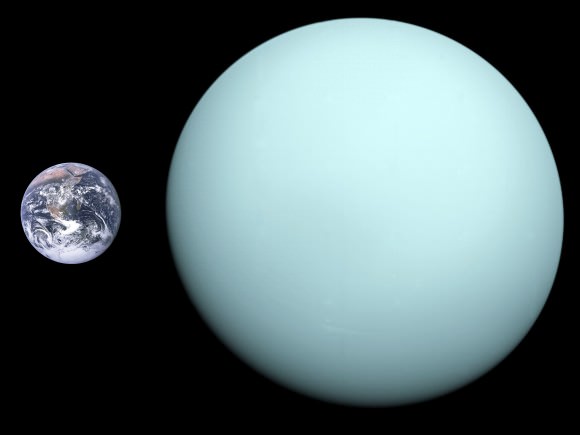
It’s almost exactly 4 times larger than Earth and has its own set of strange dusty rings – perhaps left over from a shattered moon. It has at least 27 moons, that we know of, and many more interesting features that would fascinate astronomers, if we had a spacecraft there, which we don’t. Which is ridiculous. We’ve only made one close flyby of Uranus by Voyager II back in 1986.
We’ve seen Pluto up close, but there are no plans to visit Uranus? Madness.
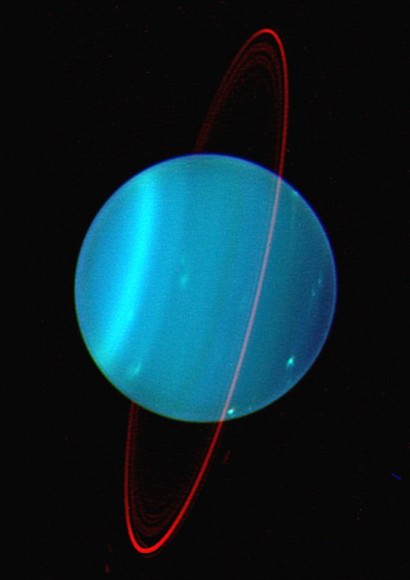
Anyway, perhaps one of the strangest aspects of Uranus is its tilt. The planet is flipped over on its side, like a Weeble, that wouldn’t unwobble.
Actually, all the planets in the Solar System have some level of axial tilt. The Earth is tilted 23.5 degrees away from the Sun’s equator. Mars is 25 degrees, and even Mercury is 2.1 degrees tilted. These tilts are everywhere.
But Uranus is 97.8 degrees. That’s just 0.2 degrees shy of a 90s boy band.
You might be wondering, why have it be more than 90 degrees. High school geometry tells me that 97.8 degrees is the same as 82.2 degrees. And that’s true. But astronomers define the angle as greater than 90 degrees when you take its direction of rotation into account. When you describe it as turning in the same direction as the rest of the planets in the Solar System, then you have to measure it this way.
What could have done that to Uranus, how could it have happened?
The fact that Uranus is flipped over on its side tells us that the calm clockwork motion of the Solar System hasn’t always been this way. Shortly after the formation of the Sun and planets, our neighborhood was a violent place.
The early planets smashed into each other, pushed one another into new orbits. Some planets could have been spun out of the Solar System entirely, while others might have been driven into the Sun. Our own Moon was likely formed when a Mars-sized object crashed into the Earth. Other moons might have been captured from three body interactions between worlds. It was mayhem.
The Solar System that you see today contains the survivors. Everything that wasn’t delivered a death blow.
And something really tried to deliver a death blow to Uranus, very early after it formed. We know this because the moons of Uranus orbit at the same tilt as the planet’s axis. This means that something smashed into Uranus while it was still surrounded by the disk of gas and dust that its moons formed from.
When the massive collision happened, the planet flipped over, wrenching this disk with it. The moons formed within this new configuration.
Astronomers think it was more complicated than that, however. If it was a single, massive collision, models suggest the planet would just flip over entirely, and end up rotating backwards from the other planets in the Solar System.
It’s more likely that another collision or even a series of collisions put the brakes on Uranus’ end over end roll, putting it into its current configuration. It boggles the mind to think about what must have happened.
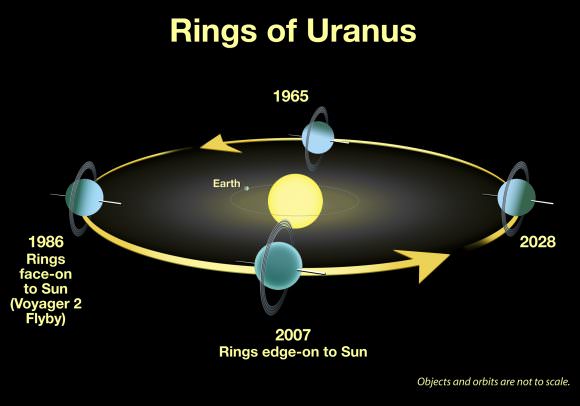
Having such a huge axial tilt makes a big different to Uranus. As it travels around the Sun in its 84-year orbit, the planet still has its poles pointed at fixed locations in space. This means that it spends 42 years with its northern hemisphere roughly pointed towards the Sun, and 42 years with its southern hemisphere in sunlight.
If you could stand on the north pole of Uranus, the Sun would be directly overhead in the middle of summer, and then it would make bigger and bigger circles until it dipped below the horizon a few decades later. Then you wouldn’t see it for a few decades until it finally reappeared again. It would be very very strange.
Of course, it’s a gas planet, so you can’t stand on it. If you could stand on it, we’d all be marveling at your ability to stand on planets.
Here we are in our calm, ordered Solar System, everything’s business as usual. But if you look around, you realize it’s pretty amazing that our planet is even here. Poor sideways Uranus is a testament to our good luck.



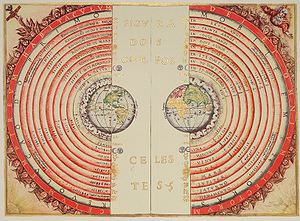 Because we live on Earth, and we see objects passing across our view of the skies, it’s natural to assume that the Earth is the center of the Universe. In fact, this perspective – known as geocentrism – was the default for all ancient civilizations. The Sun, the Moon, the planets and the stars appeared to move around the Earth each day. And because the Earth itself didn’t seem to be moving, astronomers like Ptolemy assumed that Earth was the center of the Universe. In fact, they went so far as to create very detailed models for predicting the motions of objects with a high degree of accuracy, using this completely inaccurate model of the Solar System. The predictions made by Ptolemy were used to make astrological predictions for more than 1500 years, until a much better model came along.
Because we live on Earth, and we see objects passing across our view of the skies, it’s natural to assume that the Earth is the center of the Universe. In fact, this perspective – known as geocentrism – was the default for all ancient civilizations. The Sun, the Moon, the planets and the stars appeared to move around the Earth each day. And because the Earth itself didn’t seem to be moving, astronomers like Ptolemy assumed that Earth was the center of the Universe. In fact, they went so far as to create very detailed models for predicting the motions of objects with a high degree of accuracy, using this completely inaccurate model of the Solar System. The predictions made by Ptolemy were used to make astrological predictions for more than 1500 years, until a much better model came along.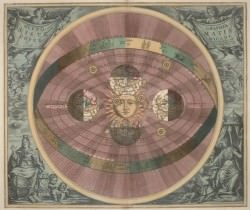 A new, more accurate model of the Solar System didn’t come around until the 16th century, when the Polish astronomer Nicolai Copernicus published his Universe-changing book:
A new, more accurate model of the Solar System didn’t come around until the 16th century, when the Polish astronomer Nicolai Copernicus published his Universe-changing book: 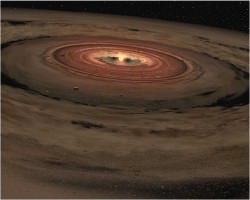 Once they could accurately describe the nature of the planetary motion in the Solar System, they were left with a more fundimental question: Why do the planets orbit the Sun? What sequence of events led to the current motions of the planets around the Sun?
Once they could accurately describe the nature of the planetary motion in the Solar System, they were left with a more fundimental question: Why do the planets orbit the Sun? What sequence of events led to the current motions of the planets around the Sun?